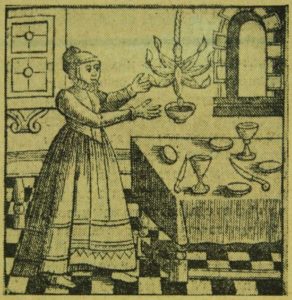As we prepare for the start of Chanukah this Sunday evening, it is a fitting time to once more explore the relationship between Judaism and Hellenism, between ancient Israel and ancient Greece. This will be our third such installment: In the first one, we explored how Hellenism influenced Judaism, while in the second we took an opposite look at how much Judaism influenced Hellenism. To break the tie, we will now analyze why it is that ancient Greece ultimately collapsed while Israel flourished and, by extension, why the spirit of Hellenism that has been reignited today is doomed to fail while Judaism will continue to thrive. Continue reading
Tag Archives: Menorah
Origins and Mysteries of Shabbat Candles
This week’s parasha, Tetzave, begins with the command to take “pure olive oil, crushed for lighting, to kindle the lamps continually.” (Exodus 27:20) This refers to lighting the “eternal flame”, ner tamid, of the Temple Menorah. Since the destruction of the Temple, we are no longer able to fulfil this mitzvah exactly. However, the Sages say we can still fulfil this mitzvah through the lighting of Shabbat candles. The Ba’al HaTurim (Rabbi Yakov ben Asher, 1269-1343) presents some mathematical proof for this as well: the gematria of ner tamid (נר תמיד) is 704, equal to “on the Sabbath” (בשבת), while the gematria of tetzave (תצוה) is 501, equal to “[God] commanded the women” (נשים צוה). In other words, God commanded women to light Shabbat candles as a way to keep the Temple’s eternal flame going.
This beautiful teaching actually helps us pinpoint the origins of lighting Shabbat candles, since the mitzvah is not explicitly mentioned anywhere in the Torah. Where exactly did it come from, why was it instituted, and why is it women specifically that are instructed to light these candles? Continue reading
Where in the Torah is Chanukah?
Chanukah is the only major Jewish holiday that is not found in the Tanakh. This is mainly because the events of Chanukah took place in the 2nd century BCE, while according to tradition the Tanakh was already compiled and codified long before by the Great Assembly at the start of the Second Temple era. In fact, historians date the earliest Greek translations of Biblical books to the 3rd century BCE. Historical records agree with the Talmud that it was King Ptolemy II Philadelphus (285-247 BCE) who first commissioned the translation of the Torah into Greek, probably for his Great Library in Alexandria. How much of Scripture was translated at that point is not clear.
Although we see that the Sages continued to debate which holy books should be included in the definitive Tanakh nearly into the Talmudic period, the Book of Maccabees was never on the table. One reason is because the Book of Maccabees is not, and does not even claim to be, a prophetic work. It is simply a historical text and, contrary to popular belief, the Tanakh is not at all a history textbook. While it does record historical events—along with laws, ethics, prophecies, and more—its purpose is far greater. The Zohar (III, 152a) goes so far as to say that a person who views the Torah as a history book which simply relates “historical narratives” and “simple tales” has no share in the World to Come! “Every word in the Written Torah is a supernal word containing lofty secrets” it says, and “the narratives of the Written Torah are only the outer garments…”
Of course, it is a fundamental principle of Judaism that the Torah is an encrypted work that contains within it allusions to everything. As such, we should be able to find encoded references to Chanukah. And we do. Where did Moses hide clues to the future events of the Hashmonean Maccabees and the Chanukah festival?

